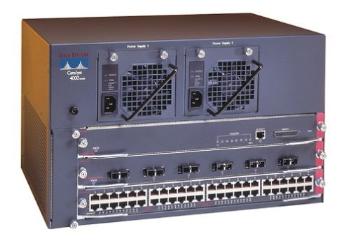There is no doubt you have probably heard by now the importance of supporting ‘east-west’ traffic flow in large data center networks. So why is this and what does it mean? And when Gartner claims that 80 percent of data center network traffic now travels from server-to-server, just what impact does this have on network design/architecture? Continue reading
Distributed Core Network Architecture
XenServer, Hyper-V, and ESXi – Architecture, API, and Coding
 Below is a link to the slide deck for a presentation I gave to some friends/colleagues for a Berkeley Virtualization and Cloud Computing certification course I took in early 2012. For my final project I did a XenServer, Hyper-V, and ESXi hypervisor comparison in regards to market share, architecture/installation, and APIs/coding. The project involved not only a presentation but coding for all three hypervisors – XenServer, Hyper-V, and ESXi. Technical details, demos, and coding examples are provided in the presentation. You can also download all code from either the download section of this site or for the latest code updates download from GitHub. Continue reading
Below is a link to the slide deck for a presentation I gave to some friends/colleagues for a Berkeley Virtualization and Cloud Computing certification course I took in early 2012. For my final project I did a XenServer, Hyper-V, and ESXi hypervisor comparison in regards to market share, architecture/installation, and APIs/coding. The project involved not only a presentation but coding for all three hypervisors – XenServer, Hyper-V, and ESXi. Technical details, demos, and coding examples are provided in the presentation. You can also download all code from either the download section of this site or for the latest code updates download from GitHub. Continue reading
Multi-Area OSPF in a Mixed Cisco and Dell Force10 Environment
In this lab I use one Cisco 2621XM [IOS 12.4(2)T], one Cisco 2621 [IOS 12.3(18)], one Cisco 3660 [IOS 12.1(1)T], one Cisco 3640 [IOS 12.1(2)T], one Cisco 3550-24PWR-SMI [IOS 12.2(44)SE6], one Dell Force10 S60 [FTOS 8.3.3.7], and one Dell Force10 S50N [FTOS 8.4.2.6] to demonstrate multi-area OSPF in a mixed environment of Cisco and Dell Force10 switches. Below is a diagram of my lab setup. Continue reading
Blocking Hackers From Accessing Your Switch via Telnet/SSH
It’s amazing how much rattling at the doors and attempted intrusions companies become accustomed to seeing on their networks. Here I show a simple way to block telnet/SSH access to your switch. First, you should never use telnet to manage your switch over the Internet because the traffic is sent unencrypted and it is therefore insecure; SSH is the better option. Perhaps you only want to manage the switch from an internal network or only want to allow or block some hosts from using telnet/ssh. Below, I block all telnet/ssh access to the switch. I’m using a Dell Force10 S50N switch [FTOS 8.4.2.6]. Continue reading
Gratuitous ARP and Basics of Connecting a Cisco IOS Switch with a Cisco CatOS Switch
Using Dell EqualLogic iSCSI Arrays for Remote Storage
Dell EqualLogic storage can provide an easy and cost effective solution for adding remote storage to your virtualized environment. The PS Series Storage arrays can be a great solution as you can easily expand storage by combining multiple PS Series storage arrays into a single storage area network (SAN). For instance, the PS6100XS is a 2U chassis which provides 13TB of storage using 2.5” disks (7 hot-pluggable solid state disk (SSD) drives and 17 hot-pluggable serial attached SCSI (SAS) hard disk drives). Continue reading
NVIDIA – Pushing the Limits of the GPU in “Batman: Arkham City” [Video]
I wouldn’t say I’m a big “gamer,” but I do once in a while like to play video games more to see the advancements in graphics/compute technology than anything else. PC games are usually my choice as the quality seems to far surpass those of video consoles. The latest PC game I tried just this weekend was “Batman: Arkham City”; to say the least I was very impressed. Continue reading




 Twitter
Twitter LinkedIn
LinkedIn Youtube
Youtube RSS
RSS